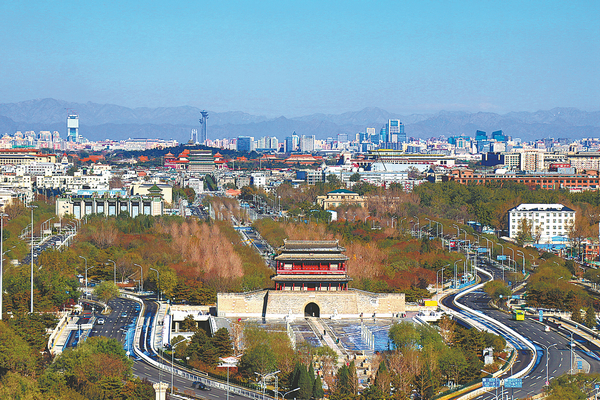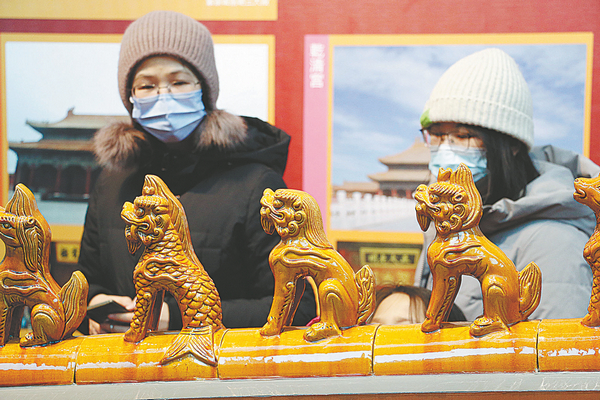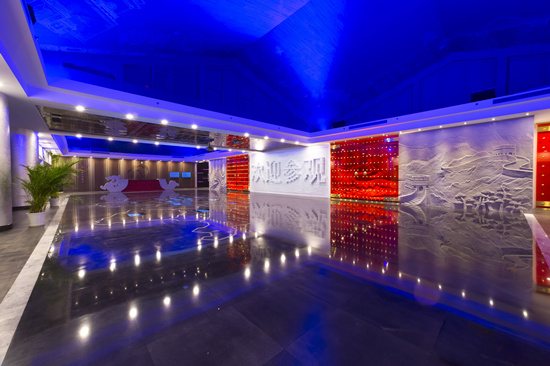Bureau lays out cultural heritage road map for Beijing

Beijing's central axis starts in the south of the city at the Yongding Gate and includes the Drum Tower and Bell Tower in the north. NIU YUNGANG/FOR CHINA DAILY
Beijing is making steady progress in seeking UNESCO world cultural heritage status for its central axis, as the draft application text was submitted to the World Heritage Center for format review ahead of schedule, according to officials.
"The year 2022 will be critical for the application of the central axis to be put on the list of world cultural heritage sites. We will complete the submission of the official application text this year," said Liu Hongchang, spokesman of Beijing's cultural heritage bureau, at a news conference held in the 2022 Beijing Media Center on Feb 13.
With a history of more than 750 years, Beijing's central axis stretches 7.8 kilometers, connecting renowned historical sites, including the Temple of Heaven, Forbidden City, Imperial Ancestral Temple, the Bell Tower and Drum Tower.
A three-year action plan on the conservation of the central axis was issued in August 2020.
Liu said the projects related to cultural relics conservation and restoration, archaeological excavation, environmental improvement and resident relocation have, as planned, been going well.
"The municipal cultural heritage bureau will focus on polishing the application text and strengthening our communication with such international organizations as the World Heritage Center and the International Council on Monuments and Sites, trying to raise the international profile of the central axis," Liu added.
At the news conference, Liu Bin, deputy director of the city's culture and tourism bureau, said Beijing will continue to distribute subsidies to representative inheritors of intangible cultural heritage across the city and ensure that they can pass on their skills.
He added that measures for managing representative trustees of intangible cultural heritage will be carried out by Beijing this year. And then, the system of life tenure for these trustees will be abolished.

Visitors at an exhibition on Beijing's central axis at the Capital Museum in January. LIU HUAIYU/FOR CHINA DAILY
Additionally, regarding the protection and utilization of the legacy of the 2022 Beijing Winter Olympics, Li Xianxia, a senior official of Beijing's Shijingshan district, said they're planning possible post-Games uses for the facilities, including Big Air Shougang and the National Winter Sports Training Center built in Shougang Industrial Park, the former site of a large State-owned steel plant in Shijingshan district.
"In the future, these facilities will perform the function of a sports recreational block, a snowboarding and aerial skiing research center and an exhibition zone of winter sports," he said.
Meanwhile, a wide range of "sports plus" businesses will be incubated in the industrial park, along with related trade, exposition, entertainment and tourism services.
Li said the renovation of blast furnaces, coke ovens and other abandoned industrial facilities will be implemented. Shijingshan will also keep exploring the cultural value of the Shougang industrial site to build it into a memorial of Beijing's modern steel industry, where visitors can take an immersive trip through its industrial remains.
Li added that the Shougang Industrial Park will prioritize the development of the sci-fi industry. So far, it has attracted Tencent, Beijing Sky Limit Entertainment Group and other enterprises to launch their sci-fi projects in the park.
xingwen@chinadaily.com.cn

 Responsibilities of the SOCAAC
Responsibilities of the SOCAAC Experiencing Beijing 2023
Experiencing Beijing 2023